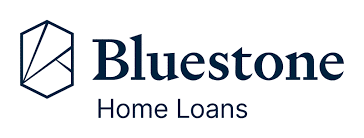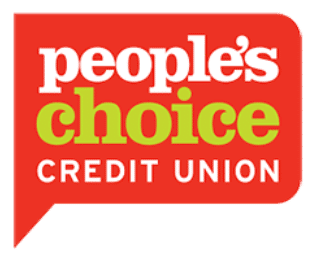Looking for your next house, apartment or unit to live in? Since the December Quarter of 2022, around 75,000 to 80,000 owner-occupier home loans have been approved and settled each quarter, according to the Australian Bureau of Statistics (ABS). So, when you do join that group and take the plunge on your next home, you’ll need a competitive mortgage deal to match.
What is an owner-occupier home loan?
An owner-occupier home loan, or owner-occupied home loan, is a mortgage for a property you’re intending to live in. This is the standard (and most common) home loan product offered in Australia, so it comes with all the regular terms and features: terms up to 30 years, weekly, fortnightly or monthly payments, interest and fees charged, redraw facilities and offset accounts typically available and more.
The only stipulation with these loans is that you must reside at the property to make it an owner-occupier home loan. If you’re planning to buy a place as an investment, you’ll need to take out a loan specifically for this purpose.
Owner-occupier home loans in Australia: 2025
As of the June 2025 Quarter, the average owner-occupier home loan in Australia is $678,000. While the number of settled owner-occupier home loans has remained fairly consistent for several years, the percentage of all approved home loans that are owner-occupied has steadily decreased since the COVID-19 pandemic.
In the December Quarter of 2020, more than three quarters (76.4%) of all home loan settlements were owner-occupied, but this dropped to less than two thirds (62.3%) in the June Quarter of 2025.
With interest rates having risen significantly since the pandemic, many Australians today are finding themselves priced out of the market or waiting for them to drop further before taking the plunge with their home loan. That’s a significant reason why investor loans have grown at a faster rate in recent times, sending the market share of owner-occupier loans in the opposite direction.
Owner-occupier home loan interest rates
As you can see, fixed interest rates are lower than variable mortgage rates at the moment. That’s because rates are expected to continue falling, so lenders could stand to gain more by locking buyers into fixed agreements for anywhere between one and five years.
Owner-occupied vs investment loan
There are several key differences between owner-occupied mortgages and investor mortgages:
| Owner-occupier loans | Investment loans | |
|---|---|---|
| Use | Property must be lived in by the mortgagor | Property must be lived in by a tenant of the mortgagor |
| Interest rates | Lower | Higher |
| Deposit requirements | Lower | Higher |
| Requirements | Less strict | Stricter (such as a minimum amount in your savings) |
| Tax benefits | Owner-occupied home loan tax deductions aren’t available | Borrowing expenses (such as interest and fees) can be tax-deductible for investor loans |
"As long as you’re going to genuinely live in your property, you should always go down the owner-occupier route, as you’ll get a better interest rate and lower repayment as a result. Even if you’re going to rent a room out, you’re still okay to structure your mortgage as an owner-occupier as long as you’re residing in it."

If you’re living in your house, go owner-occupier

Changing from owner-occupier to investment property
If you’ve been living in your home for a while but are looking to rent it out, there are a few things you’ll need to do. First of all, let your lender know that you’re going to be moving out and having renters shift in. Investment home loans are seen as being riskier than owner-occupied loans, so many lenders will specify in loan contracts that the property is your primary place of residence.
From there, you’ll usually have to refinance to an investment loan. This can either be internally (with the same lender) or externally (a new lender), so it’s worth looking around at this stage to see whether there are any better deals on the market. If you’re purchasing your new owner-occupied property with equity in your soon-to-be rental, this means you’ll have to expand your loan amount.
Either way, your interest rate is likely to go up, while you’ll probably have to pay fees for refinancing, such as exit fees for your current loan and setup fees for your new one. It's worth considering the tax implications of making the switch, too, such as what you can and can’t claim and the impact of missing out on a capital gains tax (CGT) exemption down the track.
How to apply for an owner-occupier home loan with Savvy
-
Complete our online form
Tell us about yourself and how much you need to borrow.
-
Submit your documents
We’ll need relevant documentation to verify your identity and income.
-
Talk about your options
Your broker will give you a call to discuss your potential next steps.
-
Get pre-approved
We’ll compile all the information to secure pre-approval for your home loan.
-
Lock in the home you love
Once you've found the one, secure the purchase and let your broker know.
-
Formal application and approval
We’ll help guide you through the process and advise on the steps to take.
-
Have your mortgage settled
Once everything's signed off, the property is yours!
Why apply for a home loan with Savvy
Help throughout the process
You'll be matched with an experienced mortgage broker who'll handle all the hard work for you from start to finish.
Trusted lenders
With a panel of reputable mortgage lenders, you can rest assured you'll be comparing high-quality options with your broker.
Paperless quote process
You can fill out a simple online quote via our form without having to worry about sorting through heaps of paperwork.
- Lending indicators: June Quarter 2025 - Australian Bureau of Statistics
- Investors outpace owner-occupiers in new lending: ABS - The Adviser
- Eligibility for main residence exemption - Australian Taxation Office






















